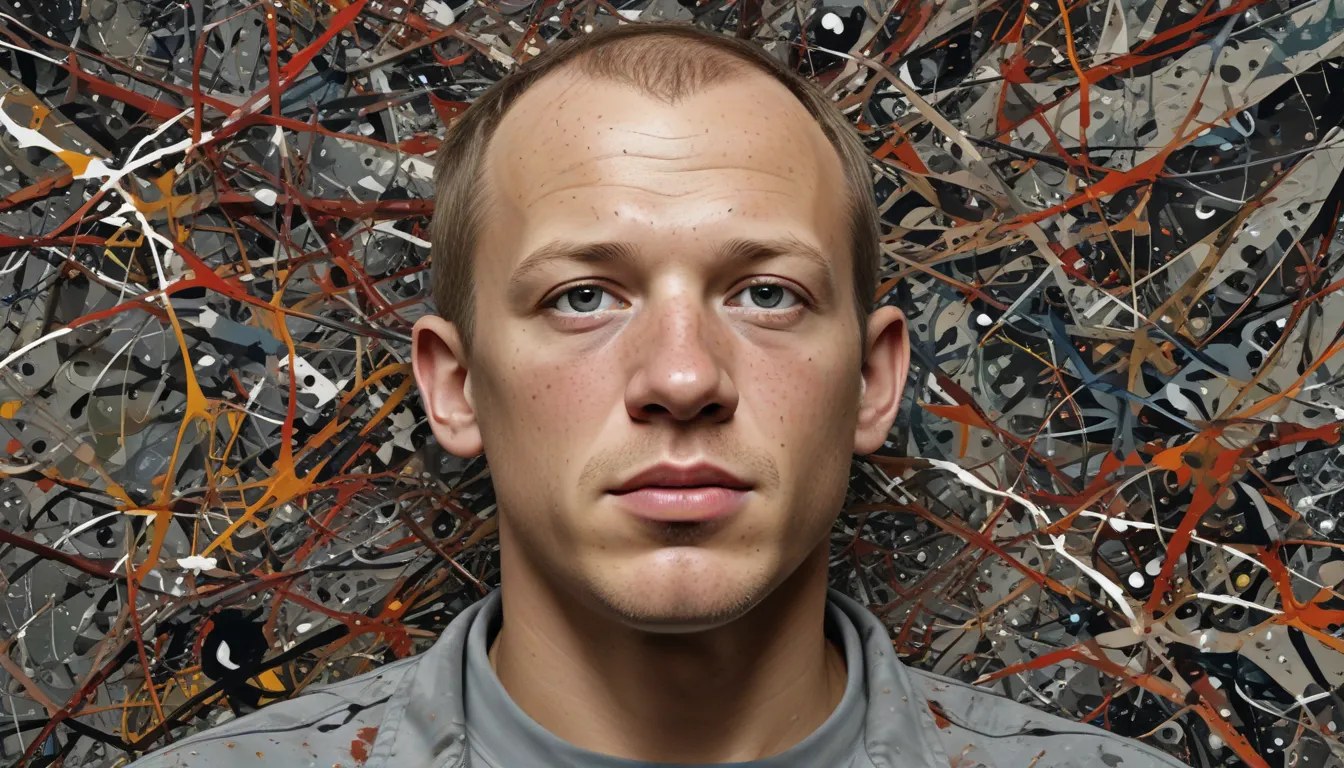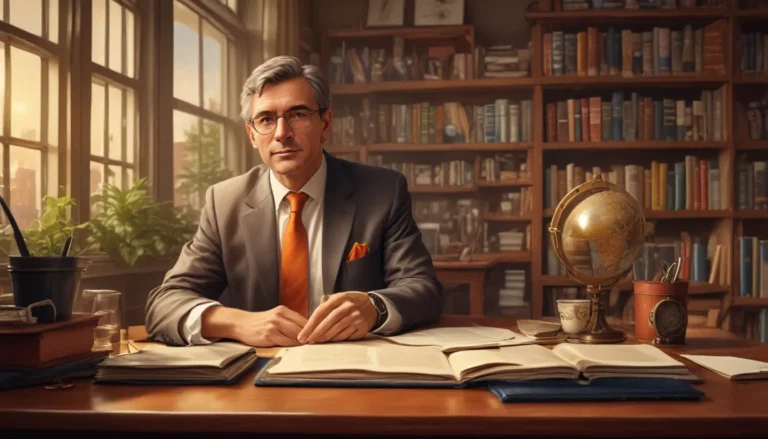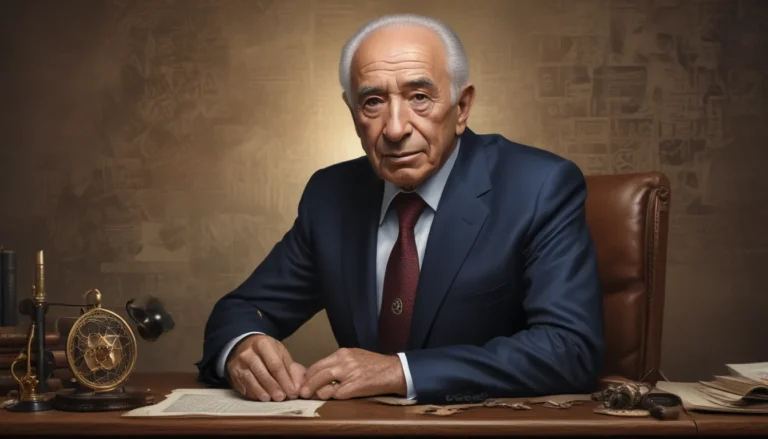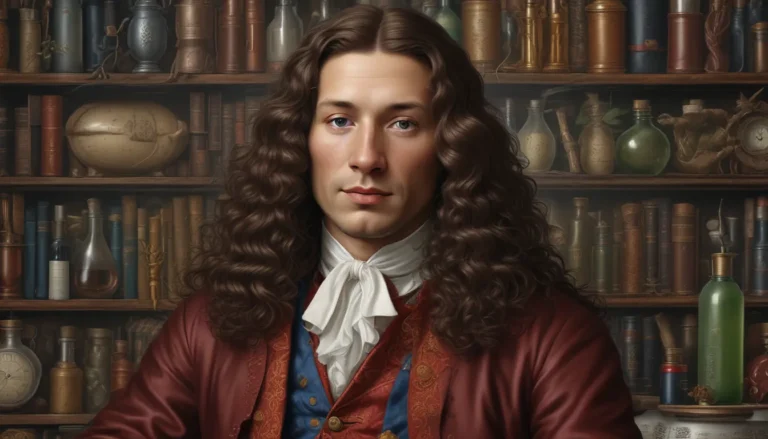The images in our articles may not match the content exactly. They are used to grab your attention, not to show the exact details in the text. The images complement the text but do not replace it.
Welcome to a journey through the life and art of Jackson Pollock, an influential American painter who revolutionized the art world with his unique style of drip painting. Join us as we uncover 20 fascinating facts about Pollock, shedding light on his early life, revolutionary painting technique, enduring legacy, and much more.
Early Life and Education
Let’s start by delving into Jackson Pollock’s roots. Born on January 28, 1912, in Cody, Wyoming, Pollock’s childhood was marked by a deep connection to Native American art, a passion that would shape his artistic journey. Growing up in Arizona and California, he honed his skills and nurtured his creative spark. His formal art education began at the Manual Arts High School in Los Angeles and continued at the Art Students League in New York, where he immersed himself in the works of Mexican muralists, setting the stage for his future artistic endeavors.
Revolutionary Painting Technique
One of the most defining aspects of Jackson Pollock’s artistry was his groundbreaking painting technique. By pouring and dripping paint onto canvases laid on the floor, he broke free from traditional constraints and embraced a new form of artistic expression. Using tools as varied as sticks, brushes, and even his bare hands, Pollock created intricate patterns of lines and splatters that captured the essence of his emotions and inner experiences. This innovative approach earned him the nickname “Jack the Dripper,” a testament to his bold and fearless artistic vision.
Abstract Expressionism
Pollock’s work played a pivotal role in the emergence of the abstract expressionist movement. Characterized by spontaneous, non-representational art that delved deep into the artist’s psyche, abstract expressionism challenged traditional norms and pushed the boundaries of artistic expression. Pollock’s paintings became synonymous with this movement, paving the way for a new era of artistic exploration and innovation.
The Influence of Surrealism
Before developing his signature style, Pollock drew inspiration from surrealism, a movement that prized the subconscious mind and embraced automatism as a creative technique. By allowing his subconscious to guide his artistic process, Pollock infused his early works with surreal elements that hinted at the vast depths of his imagination. This fusion of surrealism and abstraction laid the foundation for his later artistic breakthroughs.
Pollock and Lee Krasner
In 1942, Jackson Pollock crossed paths with fellow artist Lee Krasner, a meeting that would change the course of his life and career. Their artistic partnership blossomed into a deep personal connection, culminating in marriage in 1945. Krasner, a talented artist in her own right, played a pivotal role in shaping and promoting Pollock’s work, offering invaluable guidance and support along the way. Together, they navigated the turbulent waters of the art world, leaving an indelible mark on each other’s artistic legacies.
The Role of Music
Music served as a powerful muse for Jackson Pollock, shaping and influencing his artistic process in profound ways. Whether listening to jazz or classical tunes, he allowed the rhythms and melodies to seep into his paintings, imbuing them with a dynamic energy and vitality. For Pollock, music was more than background noise—it was a catalyst for creativity, a force that unlocked new realms of expression and innovation.
“Mural” and Pollock’s Breakthrough
In 1943, Pollock received a commission that would change the course of his career forever. Peggy Guggenheim, a prominent art collector, tasked him with creating a mural for her New York City townhouse. This opportunity marked a watershed moment in Pollock’s artistic journey, propelling him towards his iconic style of painting. “Mural” showcased Pollock’s raw energy and dynamic technique, capturing the attention of the art world and solidifying his reputation as an avant-garde artist.
Drip Technique Evolution
Pollock’s drip technique evolved and transformed over the course of his career, reflecting his ever-expanding artistic horizons. In the early stages, he employed controlled drips and precise movements, pouring paint directly from cans onto his canvases. As his style evolved, he embraced spontaneity and chaos, relinquishing conscious control and allowing his emotions to guide his brushstrokes. This shift towards gestural movements marked a profound evolution in his artistic journey, pushing the boundaries of what art could be.
“No. 5, 1948” and Record-Breaking Sale
Among Jackson Pollock’s many masterpieces, “No. 5, 1948” stands out as a testament to his artistic prowess. This iconic work, characterized by a web of intricate drips and splatters, made history when it sold for a staggering $140 million in 2006, becoming the world’s most expensive painting at the time. Its abstract beauty continues to captivate audiences, offering a window into Pollock’s unparalleled creativity and vision.
Controversy and Criticism
Pollock’s art ignited fierce debates and divided opinions within the art world. While some hailed his innovative approach as groundbreaking and revolutionary, others dismissed it as random splatters devoid of skill or technique. Pollock’s disregard for conventional forms and willingness to challenge established norms sparked intense discussions about the nature of art and the boundaries of creative expression, cementing his status as a controversial figure in the art world.
Pollock and Nature
Nature played a profound role in Jackson Pollock’s artistic process, serving as a wellspring of inspiration and creativity. Drawn to the organic rhythms and patterns of the natural world, he often found solace and inspiration in outdoor settings, immersing himself in the energy of the environment. His paintings reflect this deep connection, capturing the essence of nature’s beauty and vitality in a mesmerizing dance of color and form.
The Influence of Jungian Psychology
Carl Jung’s theories of the collective unconscious and archetypes resonated deeply with Jackson Pollock, shaping his views on the power of the subconscious mind and the role of art in expressing profound emotions. By delving into the depths of his own psyche, Pollock tapped into a rich reservoir of creativity and emotion, channeling his innermost thoughts and feelings onto the canvas in a raw and unfiltered way.
The Role of Alcoholism
Throughout his life, Jackson Pollock grappled with alcoholism, a struggle that cast a long shadow over his personal and professional endeavors. While some viewed alcohol as a source of creative spark, others saw it as a destructive force that hindered his artistic growth and contributed to his physical and mental decline. The complex relationship between Pollock’s art and his battle with alcohol remains a subject of debate and speculation to this day.
The Importance of Titles
Jackson Pollock’s enigmatic titles added another layer of depth and mystery to his abstract works, inviting viewers to interpret and engage with the art in new ways. Titles like “One: Number 31, 1950” and “Autumn Rhythm (Number 30)” hinted at hidden meanings and connections, blurring the line between the visual and the linguistic. By imbuing his paintings with evocative titles, Pollock encouraged viewers to explore and unravel the complexities of his art in a more intimate and personal manner.
Pollock’s Legacy and Influence
Jackson Pollock’s artistic legacy continues to reverberate through the halls of the art world, inspiring generations of artists to push the boundaries of creativity and expression. His revolutionary technique and fearless experimentation paved the way for new forms of artistic exploration, leaving an indelible mark on the landscape of modern art. From contemporary artists to art enthusiasts, Pollock’s influence remains palpable, a testament to his enduring impact on the art world.
The Tragic End
Despite his artistic triumphs, Jackson Pollock’s life was marred by tragedy. On August 11, 1956, at the age of 44, he met with a fatal accident while driving under the influence of alcohol. His untimely death shook the art world to its core, marking the premature end of a visionary artist whose contributions continue to resonate with audiences worldwide.
The Pollock-Krasner Foundation
In honor of Jackson Pollock and Lee Krasner, the Pollock-Krasner Foundation was established in 1985, a testament to their enduring legacy and commitment to nurturing creativity. Through grants and support for artists in need, the foundation continues to champion the spirit of artistic innovation and exploration, keeping alive the flame of creativity that burned bright in Pollock’s heart.
Pollock’s Contribution to Art Conservation
Jackson Pollock’s unconventional painting techniques posed unique challenges for art conservators, who grappled with the task of preserving his works for future generations. His use of unconventional materials and deliberate neglect of protective varnishes added layers of complexity to the conservation process, requiring meticulous care and attention to ensure the longevity of his art. Despite these challenges, ongoing conservation efforts strive to safeguard Pollock’s legacy for art lovers and scholars alike.
Pollock’s International Recognition
Jackson Pollock’s influence transcended borders, captivating audiences around the world with his bold artistic vision. His works were exhibited internationally, introducing a global audience to the raw energy and creativity that defined his art. Today, his paintings grace the walls of prestigious museums and private collections worldwide, a testament to the enduring appeal of his innovative style and artistic legacy.
Celebrating Pollock’s Artistic Legacy
Every year, on January 28th, art enthusiasts and scholars come together to commemorate Jackson Pollock’s birthday, celebrating his contributions to modern art and honoring his fearless spirit of artistic experimentation. This day serves as a reminder of the enduring impact of his work, his relentless pursuit of creative freedom, and his unwavering commitment to pushing the boundaries of artistic expression.
Conclusion
As we bring our journey through the life and art of Jackson Pollock to a close, we are reminded of the profound impact of his artistic vision on the art world. From his revolutionary painting technique to his rebellious spirit and relentless pursuit of creative expression, Pollock’s legacy continues to inspire and intrigue art lovers and scholars alike. Through his bold and innovative approach, he challenged the traditional notions of art, leaving behind a rich tapestry of creativity and passion that will endure for generations to come.
Frequently Asked Questions (FAQs)
What is Jackson Pollock best known for?
Jackson Pollock is best known for his innovative drip painting technique, which involved pouring and dripping paint onto canvases laid on the floor.
How much did “No. 5, 1948” sell for?
“No. 5, 1948” sold for a record-breaking $140 million in 2006, making it the most expensive painting in the world at the time.
What influenced Jackson Pollock’s artistic style?
Pollock was influenced by surrealism, Native American art, and the ideas of Carl Jung. Music, particularly jazz and classical, also played a significant role in shaping his artistic process.
What is the Pollock-Krasner Foundation?
The Pollock-Krasner Foundation, established in 1985, provides grants and support to artists in need, continuing the legacy of Jackson Pollock and Lee Krasner.
How did Jackson Pollock die?
Jackson Pollock died in a car crash on August 11, 1956, at the age of 44. The accident occurred while he was driving under the influence of alcohol.
We hope you’ve enjoyed this deep dive into the life and art of Jackson Pollock, an American icon whose legacy continues to inspire and captivate audiences worldwide. Thank you for joining us on this journey of exploration and discovery.






